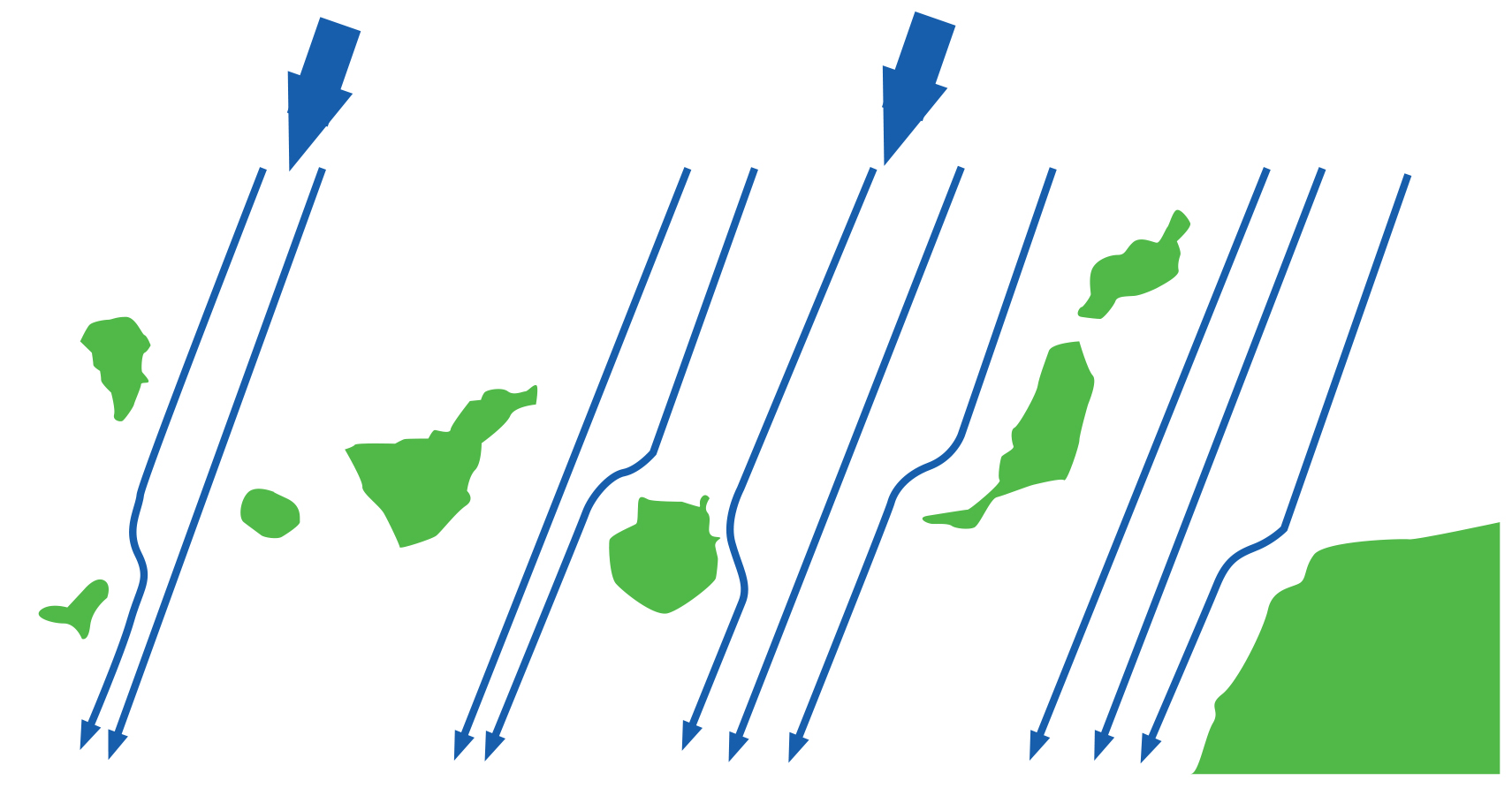Acceleration Zones & Headlands
Book Extract
Acceleration zones occur where the wind is constricted in some way by the local topography, for example, around headlands and in between islands. The zones are usually visible in the day by the change in the surface texture of the water – often referred to as ‘wind lines’ – as the wind speeds up over that part of the sea. The Canaries are an excellent example to illustrate this (see overleaf). The Canaries themselves are high volcanic mountains with impressive wind shadows – up to 25 miles to leeward of Gran Canaria, 15 miles to leeward of Isla de Tenerife and 30 miles leeward of Isla de la Palma. They also have significant wind acceleration zones, caused by the displacement of wind along and in between the islands. The air is constricted which causes acceleration, as the only way to get an increased volume of air through the same gap is for it to speed up. The acceleration zones also exist alongside the calm zones in the lee of the islands, and it is easy to stray from one to the other. A good way to predict where you’ll get lees and where you’ll get acceleration zones is to look at the prevailing wind direction and actually draw the lines around the land on the chart (electronically or on paper). This will give you a good idea of the wind lines, which is very useful at night when you can’t see them.

Examples of acceleration zones through the Canaries with a northeast wind, shown by the greater density of wind streamlines
The same thing happens around headlands too, not just through squeezed gaps. Portland Bill in the UK and Cape Byron, the easternmost point of Australia are examples where the wind can be significantly stronger close inshore. Both of these examples also have strong water movement past them, which needs to be considered with wind acceleration when deciding whether to go inshore or stay out.
© Not to be reproduced without written permission from Fernhurst Books Limited.
Weather At Sea is written by Simon Rowell. Simon Rowell is a world-class weather forecaster and yachting professional. He has skippered a yacht to victory in the Clipper Round the World Race and has been forecaster for that race since 2011. Since 2015 he has been the meteorologist for the British Olympic Sailing Team.